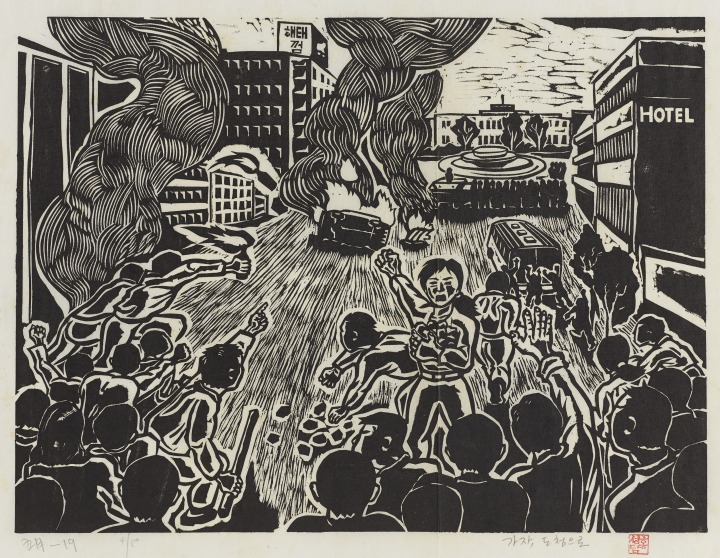Korean People’s Art
The Huge Cultural Movement for the People and Democracy
This art movement, one of the largest in Asia, developed at the peak of the democratization period in the 1980s under the military dictatorship, defying the modernism tendencies in mainstream contemporary art represented by Monochrome Painting. The artists supposed minjung (the people) as the historical agent and depicted their lives as main subjects, while breaking out from the conventional exhibition spaces through diverse media such as presentations in streets, publications, educational programs, and so on, so that the general public could appreciate and enjoy art as well as develop their political actions. Amid the political movements for democracy beginning with the Gwangju Democratization Movement in 1980, peaking with the June Struggle in 1987, many art groups emerged, including ‘Hyeonshil kwa Baleon (Reality & Utterance, with Oh Yoon, Min Joungki et al., founder in 1979), ‘Gwangju Freedom Art Association’ (Hong Sungdam et al, founded in 1979), ‘Imsulnyeon’ (Park Heungsoon et al., founded in 1982) and ‘Dureong’ (Path between Rice Fields, Kim Bongjun et al., founded in 1984). These groups organized workshops for citizens to teach woodcut making and folk culture etc. such as Gwangju Citizen’s Art School. The movement has employed art form particular to Korean culture, such as geolgae geurim (hanging picture), large scale hanging banners as seen in the Buddhist rituals, displayed at political rallies and street demonstrations since the late 1980s. Exhibitions of People’s Art were often supressed by the authorities—exhibits were confiscated, artists were arrested and tortured—but they continued their struggles for the democratization and cultural independence. However, the movements calmed down from 1993 with the inauguration of Kim Youngsam as the first civilian president in 32 years.

Hong Sungdam "May-19: Let's Go to the Province Hall" 1988 woodcut on paper

Kim Bongjun "Song of April" 1983 woodcut and watercolor on paper
